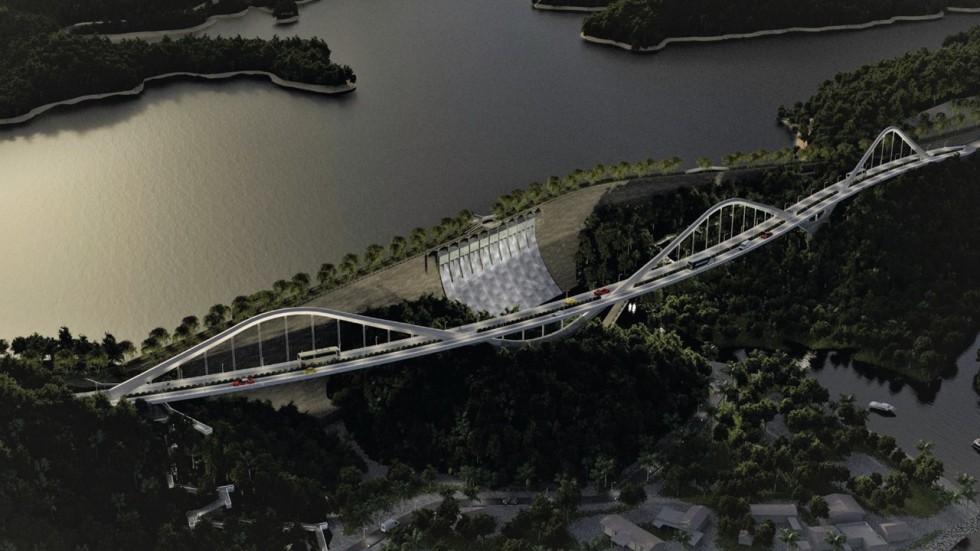A Hong Kong-based architect has unveiled his latest plan for an alternative method to cross Tai Tam Reservoir, notorious for chronic traffic problems due to the narrow road atop its dam.
Scott Myklebust, president of architectural firm M CO Design, revealed a proposal to build a bridge adjacent to Tai Tam Tuk Dam named Dragon’s Link II.
The dam now has two narrow lanes going opposite directions, and drivers must navigate with extreme caution if a wider and heavier vehicle such as a truck or double-decker bus needs to pass.
Bottlenecks occur regularly because of a very limited amount of space to manoeuvre.
“I’m a really avid cyclist and I’ve probably [ridden] over the dam a thousand times in the last eight years,” Myklebust said. “I see the [traffic] problems there and I see the natural beauty as well and I started to think ‘how could we solve this problem?’”
A spokesman for the Transport Department said it was “seeking initial advice from relevant departments” about constructing the bridge.
This is the second version of Myklebust’s bridge concept. The first had the bridge’s road traffic going in one direction, while the dam would carry traffic going in the opposite direction.
But the latest version has all vehicular and bike traffic removed from the dam and put onto the bridge.
The dam would only be for pedestrians and have green features and amenities for tourists and residents to enjoy. Myklebust compared it with New York’s High Line, a 1.45-mile-long elevated linear park and green space.
The current roadway does not allow space for pedestrians or cyclists, although some try to go across despite the risk of being hit by a vehicle.
Stanley resident Maxine Yao Jie-ning claimed having the bridge “was very important” to help alleviate chronic traffic problems.
Flooding on the dam during typhoons caused the roadway to be closed, forcing residents to take Repulse Bay Road in the opposite direction, Yao said, and the detour could add up to two hours to a trip if one wanted to drive to Chai Wan or Shau Kei Wan in eastern Hong Kong Island.
The dam was built to relieve the city’s freshwater shortages. It will celebrate its 100th birthday next February.
“We have to think, ‘what do we do for the next hundred years?’. The dam is at a place where it’s carrying traffic that [the original engineers] never envisioned it to carry,” Myklebust said.
“There are now tonnes of people living on the south side of the island. A hundred years ago, the south side of the island would have been very sparsely populated.”
Myklebust’s proposal was shown to Transport Department representatives at a Southern District Council meeting on Tuesday.
While traffic issues may be resolved after the bridge is constructed, the structure could bring undesirable follow-up, according to Southern district councillor Paul Zimmerman.
Zimmerman, an environmental advocate, worried the bridge could “stimulate” more development on the south side of Hong Kong Island.
“If there are more roads it could mean more development, then there’s more traffic,” he said, while conceding that a solution was needed because the current traffic situation across the dam “was a real problem”.
